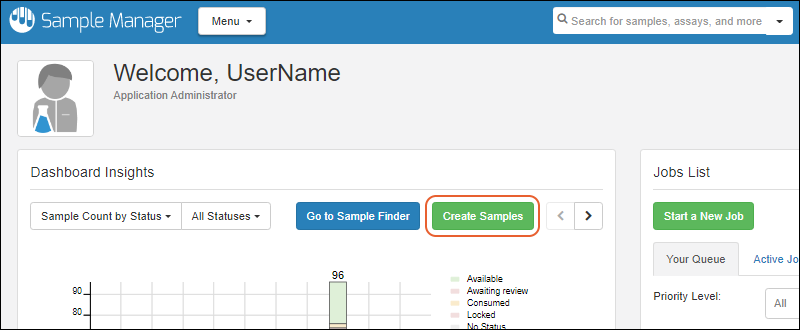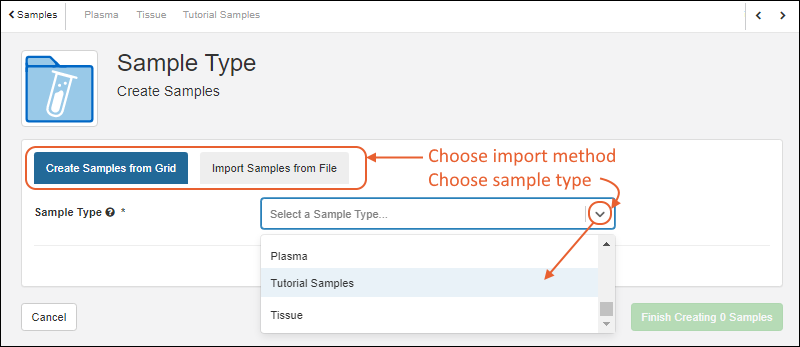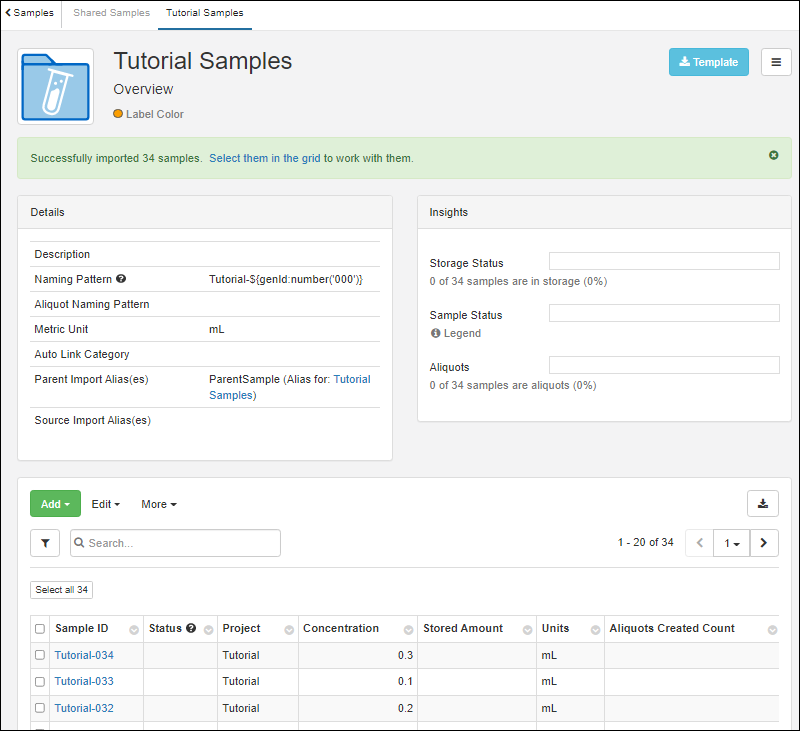Once you have created the
Sample Type, you can add the samples themselves in several ways. Import an existing inventory spreadsheet, create the samples individually, or enter information in bulk (and then refine it). The Sample Type acts like a table and each individual sample of that type will be a row in the table.
For a tutorial walkthrough of adding samples to the system, see this topic:
Tutorial: Add Samples
Note: Once you have added some samples, you can select one or more before clicking
More and then selecting one of the
Derive options:
- Aliquot the Selected Sample(s)
- Derive from Selected
- Pool Selected
Learn about these options in the topic:
Aliquots, Derivatives, and Sample Pooling.
Choose Desired Sample Type and Import Method
To add new samples, you either navigate to the type of sample you are adding and use the
Add menu (adding either manually or from a file), or go to the home page dashboard and click
Create Samples.

- Click the tab for your import method:
- Select the Sample Type you are creating using the dropdown. You can type ahead in the box to narrow the selections when the list is long.

You will now be creating samples of that type and the creation interface will reflect your method.
Note that fields of type
File are not included in either import method. Values must be individually added as described in this topic:
Attach Images and Other Files.
Create Samples From Grid
Using the
Create Samples From Grid tab gives you several options for entering sample information in the application directly, as opposed to uploading a file of data. You can manually enter values for the fields in a grid format, or use bulk insert and bulk update to streamline entry of similar values.
Learn more in this topic:
Create Samples from Grid
Import Samples From File
The other method for entering samples, particularly useful for a large group or when sample information is available in a spreadsheet already, you can import them directly from a file.
Learn more in this topic:
Import Samples from File
Work with New Samples
After creating samples, the banner message shows the number newly imported and offers the options to click to either
add them to storage now or
select them in the grid.

If your creation did not already set the status of these samples, you could select them all in the grid, then use
Edit > Edit in Bulk to set it. Learn more about sample status here:
Manage Sample Status
Create Derivatives, Pooled Samples and Aliquots
Once you have created the Samples you want to use as parents, you can also create new samples as derivatives, pooled samples, and aliquots. Learn more in these topics:
Related Topics